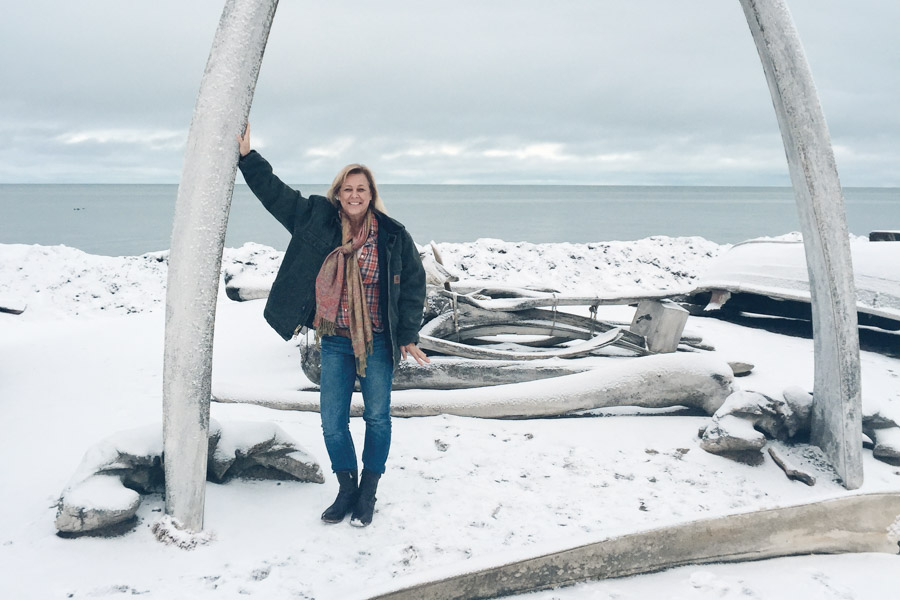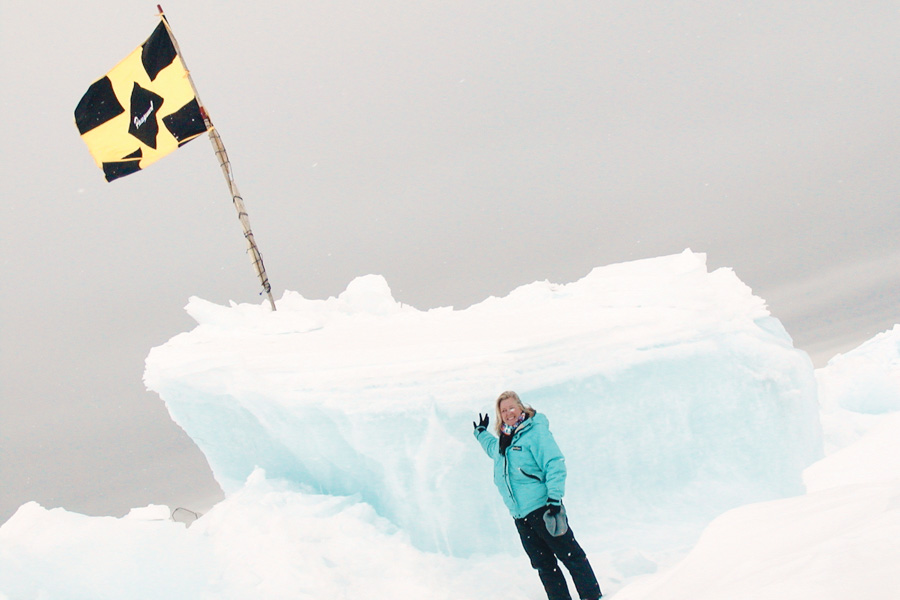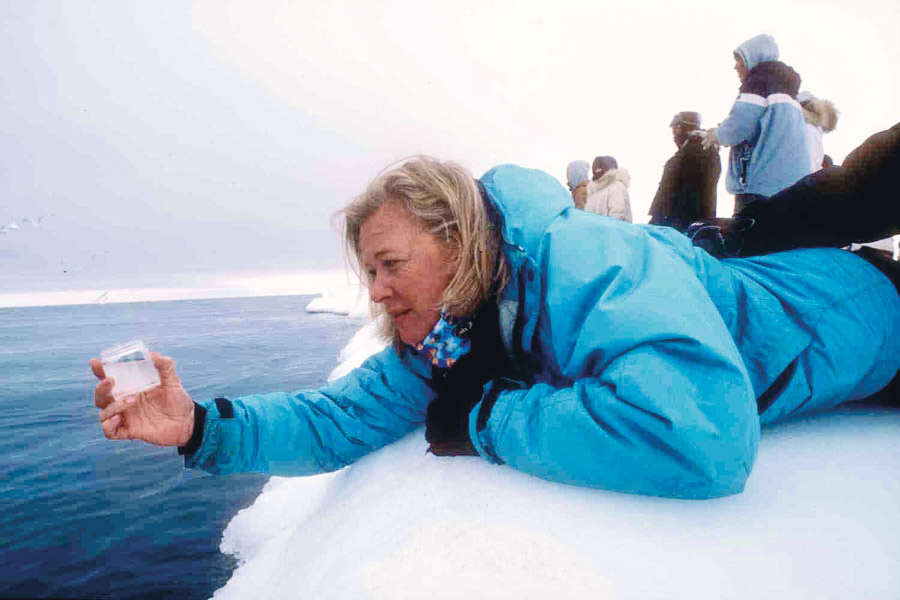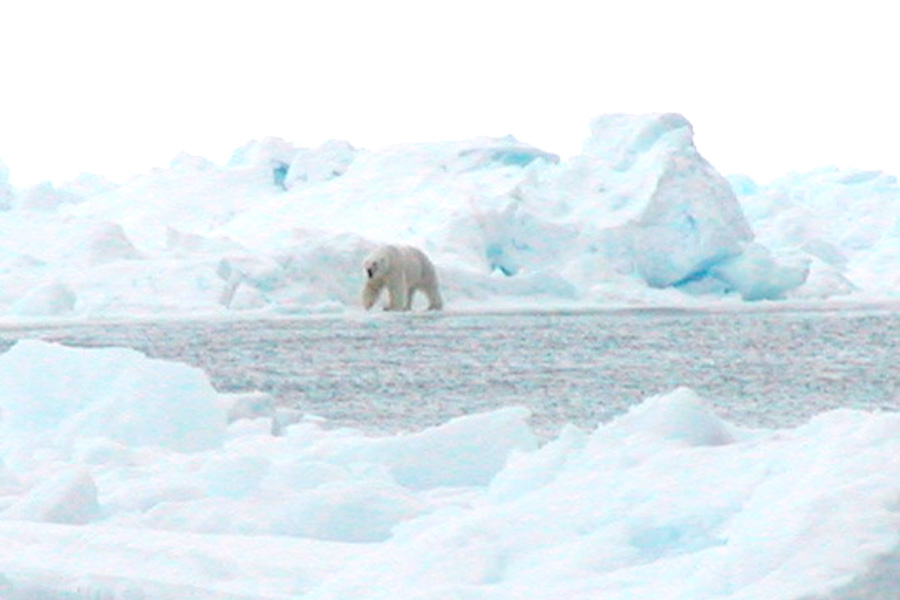Spring has arrived but it’s still cold in Barrow, Alaska, where Mote Marine Laboratory Senior Scientist Dr. Dana Wetzel waits at the edge of the ice for the return of the Inupiat hunters. Twice a year, these native hunters take to the frigid Arctic waters in boats of wood and seal hide, armed but with harpoons against that titan of the deep, the Bowhead whale. A time-honored tradition, the entire community will greet them at these frozen ends of the Earth to help tow their mighty harvest, tail-first, across eight miles of ice to the village. Everyone helps, even visiting researchers, if they want to stay long enough to get what they came for. “I’m one of the very first people out on the rope,” says Wetzel brightly. She wants the creature’s eyes.

PHOTOS COURTESY OF MOTE MARINE LABORATORY AND AQUARIUM.
As part of a research team looking to find a reliable way to estimate a Bowhead’s age, the lens of the whale’s eye may hold the secret Wetzel needs. For many animals, a quick check of the tooth answers the question. Cut it in half, count the growth layers and—voila—a workable estimate. But baleen whales have no teeth, and current methods of Bowhead aging can have a margin for error as wide as 600%. But inside the lens of the whale’s eye, a particular amino acid—aspartic acid—slowly transforms with time, shifting from its original structure to its mirror image. Scientists have been trying to use this phenomenon to measure aging for nearly two decades, and Wetzel has just made great strides.

PHOTOS COURTESY OF MOTE MARINE LABORATORY AND AQUARIUM.
After the Inupiat have said their prayer and given their blessing, Wetzel claims the animal’s eye. With a little pressure, the whitish and roughly marble-sized lens pops out, “like a grape,” she says. To get to the center of this particular Tootsie Roll Pop, the lens is frozen and then rolled across a pane of frozen glass, where layers of tissue peel off. “Like an onion,” says Wetzel, continuing the disconcerting culinary metaphors. The still-frozen nucleus is then ground up with a mortar and pestle and hydrolyzed so that the aspartic acid contents can be properly measured. And it’s this measurement process that Wetzel and her team have finally refined to the point of usable accuracy. Some of it comes down to finagling the parameters, such as adjusting temperature and time for hydrolysis to yield maximum aspartic acid molecules, and some from fine-tuning the process to reduce possibility of human error, such as using a single needle to extract and mix materials inside the tool itself, instead of making multiple transfers.

PHOTOS COURTESY OF MOTE MARINE LABORATORY AND AQUARIUM.
Bringing the new process to bear on a recent study involving 68 whales, Wetzel reports great success, dropping the margin of error to acceptable levels, and even helping to affirm theories that the whales can live as long as 200 years. Variation in the estimates still occurs, but that’s to be expected. “That’s the nature of the beast,” says Wetzel. “If you don’t [see variation], it’s rather suspect.” The next step? Using this process to further determine milestones in the animal’s life cycle, such as when they sexually mature and when reproduction ends. This information, says Wetzel, is fundamental to any conservation strategy that may be enacted to protect the extra-blubbery species, still endangered in the waters off Greenland.

PHOTOS COURTESY OF MOTE MARINE LABORATORY AND AQUARIUM.








